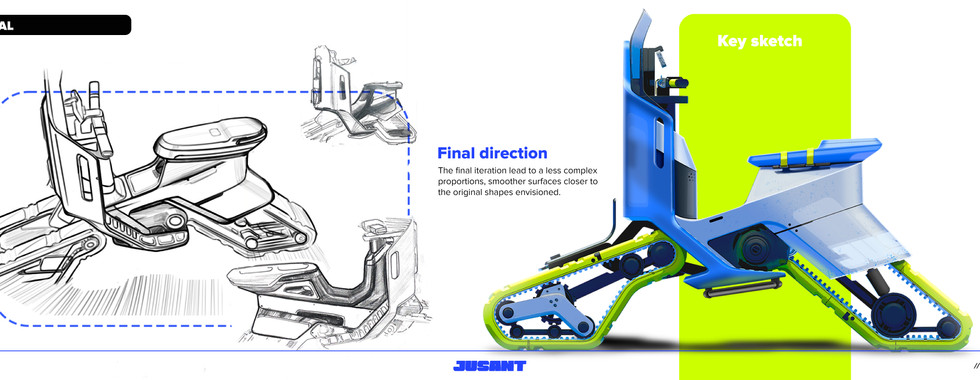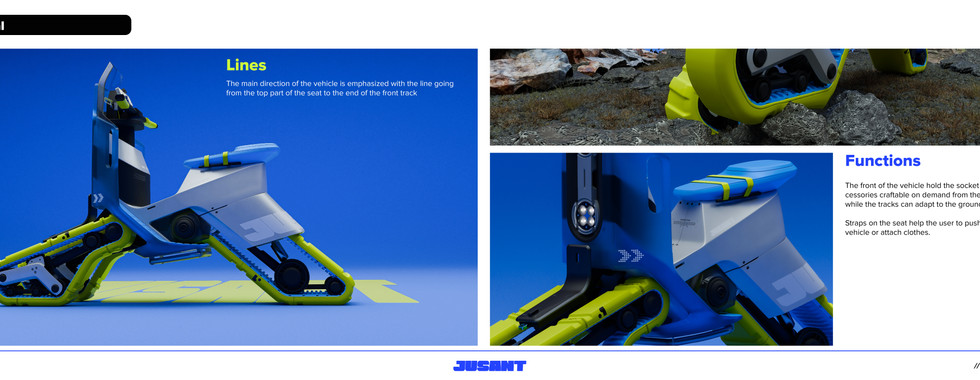Jusant: Designing Mobility for a Post-Collapse Future
- Niwwrd

- Sep 1
- 2 min read

Designed by Antonin Girard, Master Thesis at Umeå Institute of Design
What does mobility look like when the world as we know it has fractured? Jusant explores this question through a speculative scenario set in 2054, where climate disruption and systemic retreat have reshaped infrastructures, ecologies, and communities.
A Vehicle for Continuity, Not Consumption
At its core, Jusant presents a tracked electric scooter. It is far from a conventional product. Instead of prioritizing speed or sleek aesthetics, the design is rooted in resilience, modularity, and sufficiency. This machine adapts beyond transport. It can support daily survival needs, transform into a shelter, or act as a multipurpose tool in unstable environments.
By reframing mobility as a form of survival, the project shifts the conversation away from consumption driven design toward endurance and adaptation.
Material Cycles Reimagined
The scooter’s structure is manufactured from bioplastic derived from invasive algae. In doing so, it not only utilizes a renewable resource but also transforms an ecological threat into a constructive material. This choice demonstrates how scarcity can be reframed into opportunity and how ecological disruption can become a driver for innovation rather than collapse.

Design as Adaptation
Jusant positions design as a practice of adaptation in the face of uncertainty. It speculates on new relationships between humans, technology, and environment, where what remains is used to sustain continuity. The vehicle becomes more than a product. It is a response to fractured systems, a symbol of resilience, and a tool for rethinking how we inhabit shifting futures.
In this work, Antonin Girard shows how design education at Umeå Institute of Design continues to push the boundaries of speculative and critical practice, offering pathways to imagine new cycles of making, living, and surviving.













































Comments